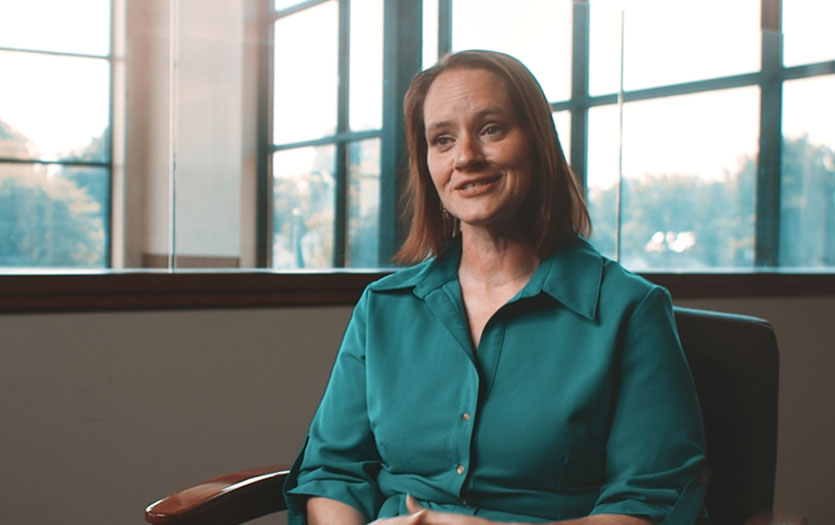
The pandemic has brought with it an onslaught of change and unpredictability. Despite all the uncertainty, medical professionals and researchers continue to unlock the mysteries that surround the novel coronavirus, including its long-term effects on patients. With the help of Jessica Pater, MS, PhD, research scientist, and Shion Guha, PhD, research analyst, Parkview Research Center, we’re able to gain a better understanding of the emerging COVID “long-haulers” phenomenon and the challenges associated with tracking the occurrence throughout healthcare systems.
What is a COVID “long-hauler”?
Dr. Pater: A COVID “long hauler” is a patient who has had a positive COVID-19 test. They may or may not have been hospitalized but are seeking some type of health care support because they are now having an onset of symptoms, such as fatigue, muscle aches, diarrhea, nausea, vomiting, vascular and muscular issues, and phantom pains in their limbs. While none of this is enough to send you into an acute hospital setting where you’d need to be hospitalized or admitted into the ICU, these symptoms will continue to come and go over time. It’s even possible to see new symptoms occur or old symptoms reappear. It's not just a 1-3-week acute illness, but rather something that we see over three, five or even six months. There is a chronic persistent to the symptoms.
What prompted you to research COVID “long haulers”?
Dr. Pater: Back in March, when COVID-19 started creeping into the coasts and toward the center of the country, I was asked by the leadership of the health system to begin investigating the following:
- How can we predict what our surge is going to entail?
- How are we going to handle an onslaught of hundreds or even thousands of patients at one time needing healthcare?
That’s when I reached out to Dr. Guha to see if he would be interested in helping us create a local, data-driven model for our hospital system.
As the months wore on and we started getting into summer, we noticed different things within our social feeds. I had many friends beginning to talk about their lingering, ongoing or reoccurring symptoms. With this new insight, we decided to start looking into our data for readmissions following an initial hospitalization for COVID-19. That's when Dr. Guha and I started asking what is this, how do we learn more about it and what’s the research? Looking at all these questions has brought us to where we are today.
At the beginning of the pandemic, there were concerns about surge capacity and overwhelming healthcare systems worldwide. Is there a concern that the COVID “long-haulers” might inundate the hospital systems in a similar way?
Dr. Pater: Most health systems are still in the frame of mind to understand their scarcest resources daily, like ICU beds, ventilators, qualified staff to run the equipment, etc. Those are the things I look for on my daily dashboard, along with how many hospitalized COVID-19 cases we have, our capacity from an ICU standpoint and general bed perspective. If I’m a COVID-19 long-hauler, however, I might not be in the hospital. Instead, I might visit my primary care doctor who's referred me to get a scan because I'm having leg pain. So, I might be tying up resources within imaging or vascular, neurological or gynecological consults. It's those hidden, buried costs of COVID-19 on our patients and the health system that we aren't looking at deeply enough, simply because there is a lack of capacity because just when we get our arms around it, we see a surge, which can cause backlogs and delays. It's a complex problem, from the health system perspective, but what we're trying to do is find out if there are other ways outside of these well-documented encounters, where with a click of a button, something will show I'm COVID-19 positive and the date of my test. Unstructured narrative notes are a massive component of what doctors and clinicians review when trying to understand their patients. We want to know if we can use sophisticated algorithms and machine learning processes to extract that data to make it more accessible and actionable.
The decisions that we make today have direct implications for our community and our region. So, letting the technology work harder for us, and extracting what we need and giving it to us in an accessible way will be critical in this marathon that is COVID-19. It's not just the sprint of what we've been doing the last six months. As this pandemic continues to unfold, and we start seeing the different dimensions of the long term impacts this novel virus has on our bodies, it's going to be essential to have those dynamic views of patients as a whole.
What if a patient hasn't had the typical symptoms associated with COVID-19 or a COVID "long-hauler"? How would a health system, providers or clinicians see that?
Dr. Pater: First, if you do have a COVID-19 positive test, and it's in your electronic health record, there are steps we can take based on that knowledge. It gets tricky when people are asymptomatic and have never been tested but might have been COVID-19 positive and are now potentially experiencing new or differing symptoms months down the road that they can't attribute to anything. That's the most challenging part from both the clinical and data science perspective.
How do health systems move forward in collecting this concrete data despite the challenges of an ever-changing landscape?
Dr. Guha: When we first started working, we were looking at acute COVID-19 patients. In those dark days of March and April, we had our hands full. Then, we started realizing this slow emergence of COVID long-haulers, and we decided it merited further investigation.
When you go to your provider and say you’re experiencing leg pain, a lack of taste or smell, you will likely be referred to a different provider for each specialty because doctors specialize in various areas. For this reason, COVID long-haulers turn out to be this pernicious problem in different sectors where we might not find the right answer or be able to put all the essential pieces together.
One way to remedy this problem is to develop a data-driven system that can manage different providers and hospital administrators. As we advance, one effort we are putting into place is an exhaustive clinical chart review of all of these various symptoms.
Dr. Pater: From day one of the pandemic, Parkview has been doing comprehensive manual chart reviews every day of all of our COVID positive hospitalized patients, capturing their movements within the health system, their dates of testing and comorbidities. We have a group of clinical research nurses who do this for us every day, looking at and understanding the processes in the hospital system, bringing any deviations to our attention. Our goal is to make sure the data is as good as we can get it. It’s a critical component and something that we've been doing and will continue to do.
Dr. Guha: The next step is to design and build a system that would help traditional hospital administrators make these decisions. It's not enough to diagnose the underlying neurological issues; we also need to understand the long-term implications.
How can we further support clinicians and frontline healthcare workers?
Dr. Pater: Speaking from the health care perspective, our doctors want to give the best treatment, the best care possible to every patient every day. Being on the front lines and dealing with what they're dealing with, it's very stressful. They are in desperate need of tools to help support them and uphold that oath they gave as clinicians, to support every patient in the way they need and deliver the best care they can. The work that Shion and I have been outlining speaks to how we can support our providers and frontline workers. We give them PPE, but we also need to be giving them quality data. Real-time information can help them decide how to support, not just acute patients in the hospital, but those who are showing up across our system in a decentralized, nonpredictive way.
In the future, what should people be paying attention to regarding COVID “long-haulers”?
Dr. Pater: Whether you have a COVID-19 diagnosis or not, I recommend you take notes. Document and keep a diary of symptoms you're having. Suppose you're having tinnitus-type symptoms, like ringing in your ears, or you’re missing periods and not sure why; please write it down. Nerve sensations, foggy thoughts or sleep disturbances are all symptoms we've seen reported and associated with COVID "long-haulers." Don't be afraid to be a steward for yourself and your health by documenting things that are outside of the norm for you. These records will give you something to go back to because you might not remember what you were having problems with, then six months from now, when you have another issue, flare-up or reoccurrence, you will have what you need. Documentation is key.
To listen to the full conversation and podcast, please click here.



